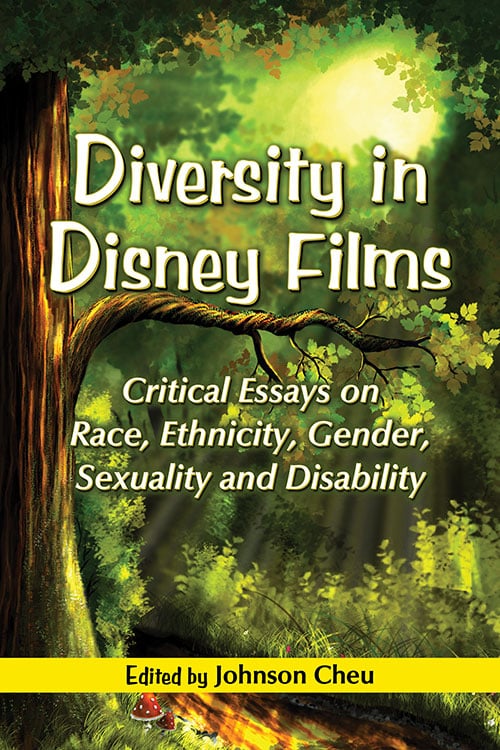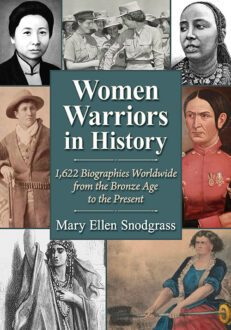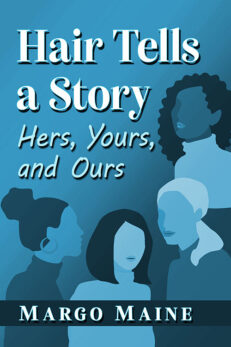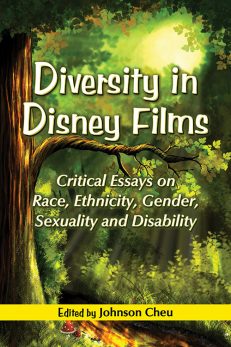Diversity in Disney Films
Critical Essays on Race, Ethnicity, Gender, Sexuality and Disability
$29.95
In stock
About the Book
Although its early films featured racial caricatures and exclusively Caucasian heroines, Disney has, in recent years, become more multicultural in its filmic fare and its image. From Aladdin and Pocahontas to the Asian American boy Russell in Up, from the first African American princess in The Princess and the Frog to “Spanish–mode” Buzz Lightyear in Toy Story 3, Disney films have come to both mirror and influence our increasingly diverse society. This essay collection gathers recent scholarship on representations of diversity in Disney and Disney/Pixar films, not only exploring race and gender, but also drawing on perspectives from newer areas of study, particularly sexuality/queer studies, critical whiteness studies, masculinity studies and disability studies. Covering a wide array of films, from Disney’s early days and “Golden Age” to the Eisner era and current fare, these essays highlight the social impact and cultural significance of the entertainment giant.
Instructors considering this book for use in a course may request an examination copy here.
About the Author(s)
Bibliographic Details
Edited by Johnson Cheu
Format: softcover (6 x 9)
Pages: 315
Bibliographic Info: notes, bibliographies, filmography, index
Copyright Date: 2013
pISBN: 978-0-7864-4601-8
eISBN: 978-1-4766-0009-3
Imprint: McFarland
Table of Contents
Acknowledgments vi
Introduction: Re-casting and Diversifying Disney in the Age of Globalization (Johnson Cheu) 1
Section I—Beyond the Fairest: Essays on Race and Ethnicity
Cannibals and Coons: Blackness in the Early Days of Walt Disney (Kheli R. Willetts) 9
Saludos Amigos and The Three Caballeros: The Representation of Latin America in Disney’s “Good Neighbor” Films (Karen S. Goldman) 23
Mapping the Imaginary: The Neverland of Disney Indians (Prajna Parasher) 38
A “Vexing Implication”: Siamese Cats and Orientalist Mischief-Making (Kimiko Akita and Rick Kenney) 50
White Man’s Best Friend: Race and Privilege in Oliver and Company (Natchee Blu Barnd) 67
Blackness, Bayous and Gumbo: Encoding and Decoding Race in a Colorblind World (Sarah E. Turner) 83
Section II—Traditions and Transformations: Essays on Gender and Sexuality
Fighting the Cold War with Pinocchio, Bambi and Dumbo (Danielle Glassmeyer) 99
“You the Man, Well, Sorta”: Gender Binaries and Liminality in Mulan (Gwendolyn Limbach) 115
“What Do You Want Me to Do? Dress in Drag and Do the Hula?”: Timon and Pumbaa’s Alternative Lifestyle Dilemma in The Lion King (Gael Sweeney) 129
Mean Ladies: Transgendered Villains in Disney Films (Amanda Putnam) 147
Section III—Of Beasts and Innocents: Essays on Disability
“You’re a Surprise from Every Angle”: Disability, Identity and Otherness in The Hunchback of Notre Dame (Martin F. Norden) 163
Dopey’s Legacy: Stereotypical Portrayals of Intellectual Disability in the Classic Animated Films (Karen Schwartz, Zana Marie Lutfiyya and Nancy Hansen) 179
A Place at the Table: On Being Human in the Beauty and the Beast Tradition (Tammy Berberi and Viktor Berberi) 195
Section IV—Up and Out: Essays on Reimaginings and New Visions
Is Disney AvantGarde? A Comparative Analysis of Alice in Wonderland (1951) and Jan Svankmajer’s Alice (1989) (William Verrone) 209
(Indivi)duality in Return to Oz: Reflection and Revision (Ana Salzberg) 224
Securing the Virtual Frontier for Whiteness in Tron (Michael Green) 238
A Womb with a Phew! PostHumanist Theory and Pixar’s WallE (Walter C. Metz) 253
Home Is Where the Heart Is: Pixar’s Up (Dennis Tyler) 268
Filmography 285
About the Contributors 293
Index 297
Book Reviews & Awards
- “Recommended”—Choice
- “Johnson Cheu deserves praise for contributing to Disney scholarship with a useful and engaging text that keeps alive the debate on ways in which popular cinematic narratives and images reflect a dynamic and changing cultural milieu”—Journal of American Culture
Ebook Availability
Amazon Kindle
Apple
B&N Nook
eBooks.com
Google Play
Kobo
Walmart





